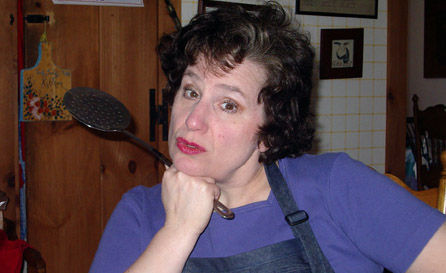Yesterday I made my annual batch (actually, batches!) of pepper jelly.
When I first got out of graduate school in the 1990s, I canned on and off all summer. In fact, I sold jams, jellies, and vinegars in my mother’s antique shop in Shelburne Falls, Massachusetts.
In recent years, however, my canning has gone downhill. I still make jam here and there as I can, but I don’t generally process it since processing takes time—something of which I seem to have less and less as the months and years flow by.
Generally, my jam gets stored in the refrigerator in large jars until I need it for family use. Sometimes it’s not even in jars: when I got ready to make the pepper jelly yesterday, I discovered that my large Dutch oven was in the downstairs refrigerator, filled with half-made strawberry jam from early July. I had to finish cooking the batch of jam before I could move on to my jelly.
Despite my retreat from canning, I still process pepper jelly every September. I have friends who would be hugely disappointed if they didn’t receive annual jars filled with this colorful, zesty concoction. And I enjoy the rhythm of my once-a-year jelly-making day.
Yesterday was no exception. I sang along with the radio as my mother and I chopped peppers. I was extra careful with the jalapeños and didn’t even burn myself! Rosemary Clooney, Frank Sinatra, and Johnny Mercer kept us company and kept us chopping.
The actual jelly-making doesn’t take long, but as long as I’m processing the jars I like to do it right, making sure that they’re sterilized, filling them with care, and gently boiling them after I fill them.
(Readers who would like to know more about home canning should read the USDA publications on this topic, available from the National Center for Home Food Preservation at http://www.uga.edu/nchfp/publications/publications_usda.html.)
The end result of yesterday’s process is the flavor of early fall in a jar. Every year I think I’m going to use the pepper jelly in some new way, but generally I restrict myself to dabbing it over a schmear of cream cheese on a cracker. I never tire of this simple appetizer.
— Tinky
Tinky’s Pepper Jelly
Ingredients:
3 medium bell peppers, seeded and coarsely chopped (I prefer red, but any color will do.)
2 2-inch jalapeño or cayenne peppers, seeded and chopped (more if you’re adventurous!)
1-1/2 cups distilled vinegar
6-1/2 cups sugar
1 dab sweet butter
6 ounces (2 pouches) liquid pectin
Directions:
Blend the peppers with 1 cup of the vinegar in a blender or food processor. Pour the blended mixture into a large non-aluminum pot, and add all the remaining ingredients except the pectin. Bring the mixture to a full, rolling boil; then stir in the pectin.
Boil the jelly for 1 minute, stirring constantly, and remove it from the heat. Stir the mixture for 5 minutes as it begins to cool to distribute the chopped peppers evenly; then ladle it into sterilized jars. Place the jars in a boiling-water bath, and process them for 5 minutes. Makes at least 5 to 6 cups.
From Tinky’s Pudding Hollow Cookbook. Copyright 2004, Merry Lion Press. For more recipes and information, visit Tinky’s web site, www.merrylion.com.







